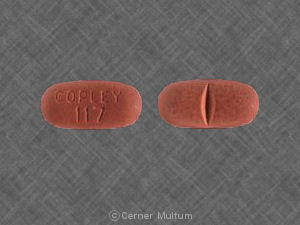Procainamide Disease Interactions
There are 7 disease interactions with procainamide.
- Cardiovascular dysfunction
- Myelosuppression
- Sinus-AV node dysfunction
- Systemic lupus erythematosus
- Electrolyte imbalance
- Anticholinergic activity
- Renal dysfunction
Antiarrhythmics (applies to procainamide) cardiovascular dysfunction
Major Potential Hazard, High plausibility. Applicable conditions: Congestive Heart Failure, Hypotension
Antiarrhythmic agents can induce severe hypotension (particularly with IV administration) or induce or worsen congestive heart failure (CHF). Patients with primary cardiomyopathy or inadequately compensated CHF are at increased risk. Antiarrhythmic agents should be administered cautiously and dosage and/or frequency of administration modified in patients with hypotension or adequately compensated CHF. Alternative therapy should be considered unless these conditions are secondary to cardiac arrhythmia.
Procainamide (applies to procainamide) myelosuppression
Major Potential Hazard, Moderate plausibility. Applicable conditions: Bone Marrow Depression/Low Blood Counts
Bone marrow suppression inducing granulocytopenia, anemia, and thrombocytopenia has occurred during administration of procainamide. Most event occurred at recommended dosages and within twelve weeks of initiation of procainamide therapy. Agranulocytosis has resulted in death in 20% to 25% of reported cases. Therapy with procainamide should be administered cautiously in patients with or predisposed to myelosuppression or any type of cytopenia. Clinical monitoring of hematopoietic function including complete blood counts prior to initiation of therapy and at weekly intervals for the first 3 months of therapy and periodically after that is necessary.
Procainamide (applies to procainamide) sinus-AV node dysfunction
Major Potential Hazard, High plausibility. Applicable conditions: Heart Block
The use of procainamide is contraindicated in patients with complete AV node block because of its effects in suppressing nodal or ventricular pacemakers and the hazard of asystole. Therapy with procainamide should be avoided in patients with second-degree AV block or various hemiblocks in the absence of a functional artificial pacemaker.
Procainamide (applies to procainamide) systemic lupus erythematosus
Major Potential Hazard, High plausibility.
The use of procainamide is contraindicated in patients with established systemic lupus erythematosus (SLE), since aggravation of the symptoms is highly likely. A positive antinuclear antibody test (+ANA), with or without symptoms of SLE, often results from chronic therapy with procainamide in patients without SLE. An SLE-like syndrome, rarely involving pathologic renal changes, can occur following prolonged procainamide therapy. The benefit versus risk should be evaluated in the presence of a +ANA in a patient without a history of or predisposition to SLE.
Antiarrhythmics (applies to procainamide) electrolyte imbalance
Moderate Potential Hazard, High plausibility. Applicable conditions: Hypokalemia, Hyperkalemia, Magnesium Imbalance
Electrolyte imbalance can alter the therapeutic effectiveness of antiarrhythmic agents. Hypokalemia and hypomagnesemia can reduce the effectiveness of antiarrhythmic agents. In some cases, these disorders can exaggerate the degree of QTc prolongation and increase the potential for torsade de pointes. Hyperkalemia can potentiate the toxic effects of antiarrhythmic agents. Electrolyte imbalance should be corrected prior to initiating antiarrhythmic therapy. Clinical monitoring of cardiac function and electrolyte concentrations is recommended.
Procainamide (applies to procainamide) anticholinergic activity
Moderate Potential Hazard, High plausibility. Applicable conditions: Myasthenia Gravis
Procainamide decreases the release of acetylcholine from skeletal muscle motor nerve endings. Procainamide can worsen the symptoms of myasthenia gravis. Therapy with procainamide should be administered cautiously in patients with myasthenia gravis.
Procainamide (applies to procainamide) renal dysfunction
Moderate Potential Hazard, High plausibility.
Procainamide is primarily eliminated by the kidney. The serum concentration of procainamide is increased and the half-life prolonged in patients with renal impairment. Therapy with procainamide should be administered cautiously in patients with renal dysfunction and dosage modifications should be made based on the degree of renal impairment.
Switch to professional interaction data
Procainamide drug interactions
There are 405 drug interactions with procainamide.
Procainamide alcohol/food interactions
There is 1 alcohol/food interaction with procainamide.
More about procainamide
- procainamide consumer information
- Check interactions
- Compare alternatives
- Pricing & coupons
- Drug images
- Side effects
- Dosage information
- During pregnancy
- Drug class: group I antiarrhythmics
- Breastfeeding
- En español
Related treatment guides
Drug Interaction Classification
| Highly clinically significant. Avoid combinations; the risk of the interaction outweighs the benefit. | |
| Moderately clinically significant. Usually avoid combinations; use it only under special circumstances. | |
| Minimally clinically significant. Minimize risk; assess risk and consider an alternative drug, take steps to circumvent the interaction risk and/or institute a monitoring plan. | |
| No interaction information available. |
See also:
Further information
Always consult your healthcare provider to ensure the information displayed on this page applies to your personal circumstances.


